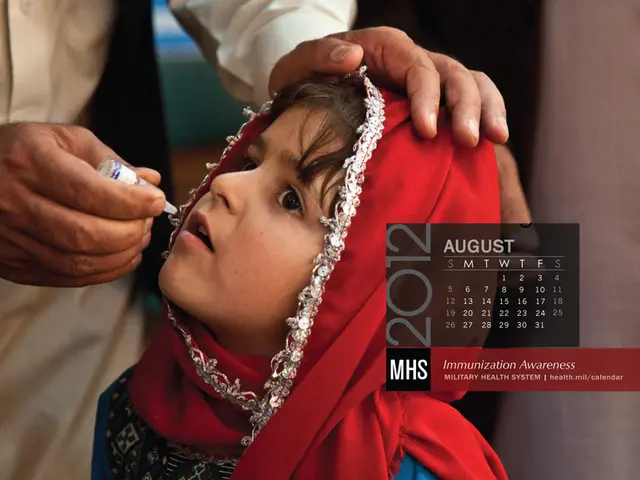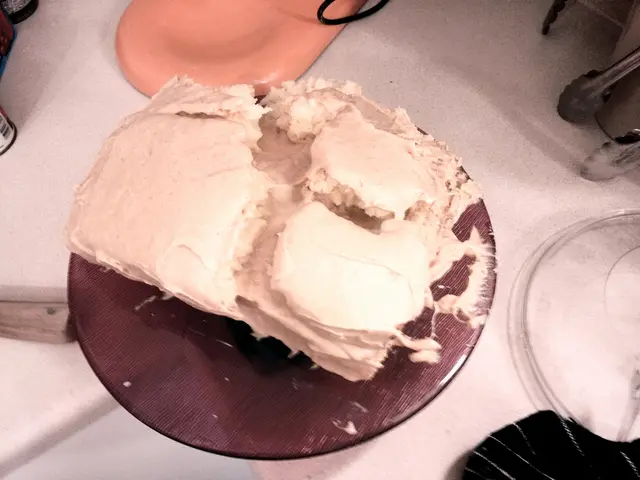Distinguishing Age Spots from Skin Cancer: Recognizing the Key Differences
Age Spots and Skin Cancer: Understanding the Differences
Age spots, a common condition in mature adults, are harmless darkened patches that may resemble certain types of skin cancer. Both conditions often appear on sun-exposed areas like the hands, face, and shoulders.
Distinguishing age spots from skin cancer is crucial for early detection and proper treatment. Key differences lie in texture, color, and placement.
Age Spots and Their Characteristics
Age Spots, also known as solar lentigines or liver spots, are small, dark areas on the skin that seem to blend with the surrounding skin. They are generally flat, smooth, and do not result in itching or crustiness.
Age spots develop due to excessive melanin production in response to sun exposure. This Melanin protection results in skin darkening. Age spots are more prevalent on lighter skin but can manifest on any skin tone. Most age spots develop from middle age onward.
Skin Cancers Exhibit Harmful Growths
Skin cancer is a genuine concern. Like age spots, it is most common on sun-exposed areas, but it poses a threat to overall health, potentially spreading to other parts of the body.
Skin cancer occurs when UV radiation or other environmental or genetic factors damage skin cells, causing them to mutate, multiply, and grow at an accelerated pace. Skin cancers fall into three main categories: basal cell carcinoma, squamous cell carcinoma, and melanoma.
An additional potential problem is actinic keratosis, a precancerous growth that may show up as a rough, scaly, or flaky spot similar to an age spot. If left untreated, actinic keratosis could develop into skin cancer.
Can Age Spots Transform into Cancer?
Age spots do not develop into cancer. However, actinic keratosis, which can resemble age spots, is a precancerous growth. Early recognition and prevention are essential for actinic keratosis to avoid evolving into cancer.
Symptoms Comparison
The differences in the symptoms between age spots and skin cancer can help identify the specific condition.
Age Spot Symptoms
Age spots typically appear:
- flat and smooth
- yellow, brown, or grey
- defined by clear borders
- between a few millimeters or centimeters in size
- on sun-exposed areas, including the face, hands, shoulders, feet, arms, and back
Age spots might fade in the winter but have a more notable presence in the summer when the skin experiences more sunlight exposure.
Skin Cancer Symptoms
Skin cancer symptoms can vary based on numerous factors, such as cancer type, but key warning signs include:
- asymmetrical shape
- irregular, indistinct, or blurred edges
- changes in size, color, or shape
- multiple colors on the same spot
- colors like pink, blue, purple, black, or brown
- raised, red patches
- pale or yellowish firm patches similar to scars
- discomfort, itching, oozing, or bleeding
- scaly, crusty patches
- raised edges that lower in the middle
Signs of actinic keratosis include:
- rough, scaly areas
- red, grey, pink, or skin-colored patches
- flat scaly patches that look like age spots
- scaly, rough bumps that resemble acne
- scaly, rough patches on the lips
- horn-like growths
When to Seek Medical Advice
It is advisable to consult a healthcare professional if a person notices any unusual changes in skin appearance or characteristics. Early cancer detection increases the potential for successful treatment. One should seek medical advice if a skin mark:
- changes in color, size, location, or shape
- differs from other marks on the skin
- causes lingering itching, oozing, or scabbing that does not heal within four weeks
Diagnosis and Treatment
Diagnosing age spots usually involves a visual examination by a doctor or dermatologist to assess texture, appearance, and location. If unsure about the diagnosis, a skin biopsy may be performed to test for other conditions like skin cancer or actinic keratosis.
Age spots do not require treatment because they are not harmful. Nonetheless, some people may choose to have treatments to minimize their appearance, such as creams, lotions, laser treatments, cryosurgery, microdermabrasion, or chemical peels.
Skin cancer treatments vary depending on factors such as cancer type, location, and stage. Treatment options may include surgical excision, Mohs surgery, radiation therapy, cryotherapy, topical medications, or systemic therapies for advanced cases.
In Conclusion
Age spots, skin cancer, and actinic keratosis may appear similar, but detailed differences such as shape, texture, and color can help identify each condition. Regular skin checks and early recognition are essential for an effective management strategy and cancer prevention. While age spots present no threat, it is crucial to take proper preventative measures against skin cancer and address any abnormal skin changes with a healthcare professional.
- Age spots, also known as solar lentigines or liver spots, are harmless darkened patches that generally appear flat and smooth on sun-exposed areas like the hands, face, and shoulders, unlike skin cancer, which can be a genuine concern posing a threat to overall health.
- Key differences between age spots and skin cancer lie in texture, color, and placement: age spots are typically discrete and do not result in itching or crustiness, while skin cancers may be raised, red, or scaly.
- Skin cancers, such as basal cell carcinoma, squamous cell carcinoma, and melanoma, develop due to UV radiation or other environmental or genetic factors damaging skin cells, causing them to multiply at an accelerated pace, whereas age spots emerge from excessive melanin production due to sun exposure.
- Unique skin conditions like actinic keratosis, although precancerous, may resemble age spots but exhibit symptoms such as rough, scaly areas, red, grey, pink, or skin-colored patches, flat scaly patches that look like age spots, scaly, rough bumps, scaly, rough patches on the lips, and horn-like growths.
- Consulting a healthcare professional is advisable when a person notices any unusual changes in their skin or characteristics, as early cancer detection increases the potential for successful treatment, and symptom comparison between age spots, skin cancer, and actinic keratosis can help identify specific conditions, with age spots not requiring treatment but may be minimized through creams, laser treatments, cryosurgery, microdermabrasion, or chemical peels.








